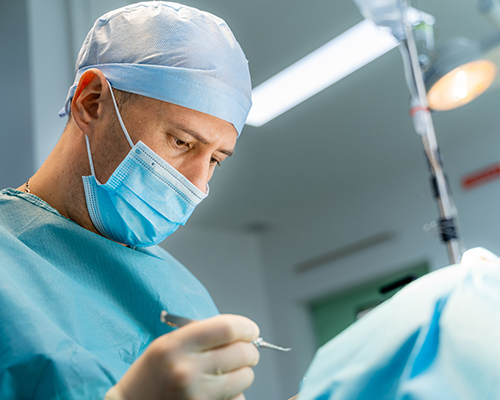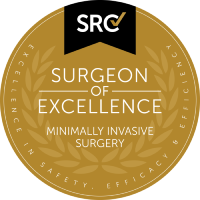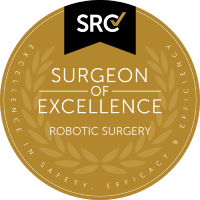Breast Surgery Options in Wellington, FL
Palm Beach County Breast Surgery Options
Not all issues with the breast are cancer-related. There are breast conditions that may require surgical treatment for benign issues such as:
- Fibrocystic Changes
- Fibroadenoma
- Benign Lesions
- Cysts
- Breast Infection
It is important to seek medical care if you have a change in your breast(s), feel a lump or bump, have drainage from your breast/nipples, or have an abnormal area that just does not seem right to you.
Hearing the words, “you have an abnormal mammogram” can be life changing. We understand your concern, stress, and alarm. We are able to provide you with the knowledge you need to make an informed decision. Our staff will assist you every step of the way, including the coordination of your medical care. Our team at Advanced Surgical Physicians is here to help make this journey a little less stressful.
We Are Here For You
During your first appointment, our team will evaluate suspicious breast problems and make recommendations for a plan of care. We encourage you to bring copies of any imaging studies to this first evaluation. At this appointment, a physical exam will be performed and other tests may be ordered, including a breast ultrasound. Typically, a biopsy is the only way to determine if the breast abnormality is malignant. A biopsy is the removal of cells or tissue from a suspicious mass that is then examined under a microscope to check for cancer cells. This is the only way to determine if a mass is cancerous or benign.
There are several types of breast biopsy procedures. The method selected will be based on both medical factors and personal preference. Medical factors include: the size and location of the breast lump or suspicious area, the number of lumps or abnormal areas such as suspicious calcifications, or any other medical problems.
Many breast procedures (including biopsies) are performed in an outpatient setting. It is our goal to reduce wait time and efficiently coordinate all aspects of your care, including diagnostic procedures.
We offer a full spectrum of surgical options for breast treatment including:
- breast conserving surgery (Lumpectomy)
- nipple sparing mastectomy
- skin sparing mastectomy
- sentinel node biopsy
- reconstruction (with a consulting plastic surgeon)
- balloon–catheter placement for partial breast radiation
Advances in the treatment of breast diseases are constantly being made. At Advanced Surgical Physicians, we are committed to staying on the cutting edge of this research.
Diagnosis Of Breast Diseases
Fine Needle Aspiration (FNA) This is a non-surgical biopsy in which a small needle is used to withdraw a sample of cells from the breast lump. Once removed, the cells are then examined by a pathologist.
Core Biopsy A sample of the lump or abnormal tissue seen on imaging is taken using a vacuum assisted core biopsy instrument.
Ultrasound-Guided Core Biopsy Biopsy under local anesthesia, often done in the office, is a technique where a needle is placed into the breast tissue to obtain tissue samples. Ultrasound is used to guide needle placement into the abnormality. Once the abnormality is sampled, the tissue is then examined by a pathologist. In addition to assisting in locating the abnormality, ultrasounds can detect benign lesions, such as fluid-filled cysts and benign masses.
Stereotactic Breast Biopsy Procedure Biopsy under local anesthesia, is a technique where a needle is placed into the breast tissue to obtain tissue samples. X-ray/mammogram images are used to position the needle into the abnormality. Once the abnormality is sampled, the tissue is then examined by a pathologist.
Open excisional biopsy An open excisional biopsy is the surgical removal of a portion or the entire lump in the operating room. This procedure is often performed with Savi Scout Localization. Once removed, the tissue is then examined by a pathologist.

The Next Step
Regardless of which biopsy procedure is used, the cells or tissues that are removed are analyzed by a pathologist, a physician who specializes in diagnosing abnormal tissue changes. When we receive the results, we carefully explain all available treatment options and how each applies to your individual diagnosis. Then, together, we develop the optimum treatment program. At Advanced Surgical Physicians, our team is committed to providing outstanding, compassionate care and helping you throughout the entire diagnosis, treatment, and recovery process.
To ensure the best outcome, a treatment plan is designed together with one or more specialists. Our patient navigator will coordinate your care plan by working closely with the radiation oncologist, medical oncologist, and plastic surgeon, if needed. This group of physicians will become part of Your Team.
Breast Conservation Surgery
Breast Conservation Surgery is designed to eliminate cancer and maintain the shape and normal appearance of the breast. Breast conservation surgery is a procedure that focuses on preserving healthy breast tissue and only removing the cancerous tissue with a small amount of healthy tissue from the breast.
Also known as a lumpectomy or a partial mastectomy, this approach is often used when:
- There is one tumor in the breast
- There are two or more tumors close together
- The patient has not received radiation therapy
- The patient has a reasonably small tumor in relation to the breast
- There is no medical condition that would complicate radiation therapy
Sentinel Node Biopsy A sentinel node biopsy is used at the time of surgery to pinpoint the first lymph node into which a tumor drains. To locate the sentinel node, a radioactive tracer, a dye, or both are injected into the breast during surgery. The tracer travels the same path to the lymph nodes that the cancer cells would take, making it possible for the surgeon to determine the one or two nodes most likely to test positive for cancer. This procedure removes the smallest number of lymph nodes possible for accurate diagnosis with fewer complications. This is an important part of your breast cancer surgery since it will help determine your medical treatment after surgery.
When lumpectomy is chosen as treatment for breast cancer, most patients will need to have radiation therapy. The best choice of radiation therapy will ultimately be determined by your radiation oncologist in conjunction with Your Team.
Partial Breast Radiation
This outpatient radiation procedure treats only the affected area of the breast without harming the surrounding healthy tissue. About a week after surgery, in the office under local anesthesia, the surgeon places a thin catheter (Savi Brachy) that will direct radiation to the affected area. The entire course of radiation therapy usually takes place over a 5 day period.
External Beam Radiation (Whole Breast)
External Beam Radiation may be recommended after the breast tumor is removed. In this traditional radiation therapy, a precision beam of radiation is directed to the affected area of the breast. Usually, this procedure takes place over several weeks of treatment.
Intraoperative Radiation Therapy (IORT)
Radiation Therapy that is administered at the time of surgery in the operating room while you are under anesthesia.
When breast conservation surgery is not an option, or as an alternative a mastectomy may be performed. In these cases, you can consider a combination procedure where we will work with a plastic surgeon for breast reconstruction.
Mastectomy
A mastectomy is the surgical removal the breast. It can be performed for prevention or treatment of breast cancer. Some women who are at an extremely high risk of developing breast cancer may choose to undergo a risk reducing (prophylactic) mastectomy before any cancer actually develops.
Sentinel Node Biopsy A sentinel node biopsy is used at the time of surgery to pinpoint the first lymph node into which a tumor drains. To locate the sentinel node, a radioactive tracer, a dye, or both are injected into the breast during surgery. The tracer travels the same path to the lymph nodes that the cancer cells would take, making it possible for the surgeon to determine the one or two nodes most likely to test positive for cancer. This procedure removes the smallest number of lymph nodes possible for accurate diagnosis with fewer complications. This is an important part of your breast cancer surgery since it will help determine your medical treatment after surgery.
Typically, a mastectomy is most often selected when:
- Conservative methods to remove cancerous cells are insufficient
- Radiation exposure is too risky or unwarranted
- There is more than one tumor in the breast
- The tumors are spreading rapidly
- Removal of the tumor would necessitate removal of a large amount of breast tissue
- Patient Decision
Immediate Breast Reconstruction Surgery
Many women choose breast reconstruction surgery when having a mastectomy. Breast reconstruction is a team approach involving both your breast surgeon and plastic surgeon. At the time of your surgery, the doctors work side-by-side in the operating room. The plastic surgeon will use either an implant or tissue from another part of the body to recreate the original shape of the breasts.
At Advanced Surgical Physicians, we will help you decide which surgical procedure to manage your breast cancer is right for you.







